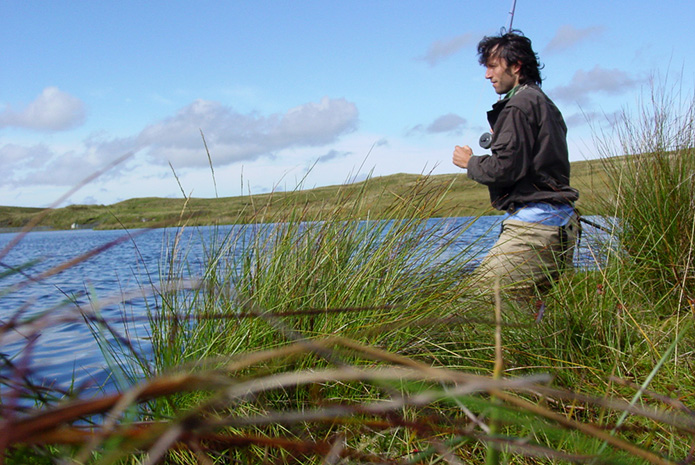
My passion is fishing for wild trout in wild places and a small lake in mid Wales fits the bills perfectly. As it’s Welsh, I shall call it a llyn and the one I’m talking about is called Bugeilyn.
It’s well known to visitors to Tynycornel hotel and is a perfect foil to Tal-y-Llyn on whose banks the hotel sits. Whereas Tal–y-Llyn has comfortable boats, closely controlled stocking, fine over-wintered brownies and rainbows and the chance of a fresh run salmon or sea trout, Bugeilyn is something else.
Since I was a nipper, I’ve been lucky to fish the llyn for over 20 years. With my father and an elderly retired solicitor, we three men fished from an old clinker rowing boat and waded on quaking banksides. Looking back at my journal, a red letter day in 1982 saw three wild brownies of around the 1 pound mark on the bank. There was talk of the solicitor hooking a fish well over 3 pounds by the inlet stream and a couple of 4 pounders have been recorded. However, what Bugeilyn provides in compensation for smaller fish, is quality of surroundings, challenging wading and a true essence of the wild brownie spirit.
Last year, I revisited the wild haunts of Bugeilyn.
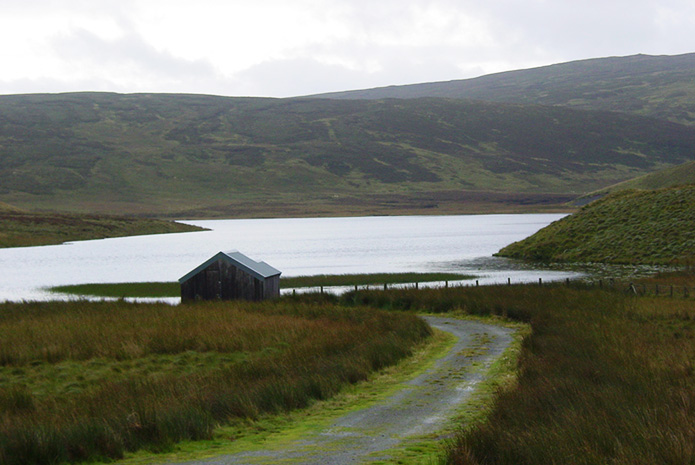
I had planned to camp the night before but had second thoughts when I was immersed in a fine mist blowing off the edge of the moorland, smearing the far horizon, with its brooding ranks of distant conifers, into one turbulent landscape. As the track rapidly disappeared from view, I had wondered what was I doing pitching a tent on a night like this!
To make matters worse, the track had been washed away leaving it totally impassable. I was left on an exposed ridge, with the gloaming upon me, a strengthening wind, and had had to erect my tent on the only bit of level ground I could find.
During the rough night, I had been woken by the sound of running water very close to my ear, and on putting my hand out, had touched cold water flowing right past me. In the morning, I found out that the ditch along the track had been blocked by the washed away road, diverting the water through my tent site. It had been a relief to get into my dry waders in order to cook breakfast.
Historically, the llyn had been a stream set within acid heather-shouldered hills and having been dammed years ago, is split into two parts. The depth is relatively shallow and is easiest fished loch style from the fibreglass rowing boat. With size 14 to 16 traditional patterns such as Bilbio, Mallard and Claret and Black Spider, cast on a short line, it’s always worth fishing right up to the edge.
Just as a drift ends and the boat is blown up against the soft overhanging tufts of bilberry, throwing a line parallel to the bank has more often than not been greeted by a fierce swirl at the flies.
I was bank fishing today and now that the weather had turned brighter, was concerned that the shy wild brownies might not be feeding on the surface. I prefer to fish with a dry line. This is mainly due to the speed that a rise can come on at Bugeilyn. Lasting maybe only a few minutes, an ability to change flies from wet to dry can make all the difference and a size 16 Grey Dun will disappear in a flurry of peaty water.
An adaptable rod is useful on this intimate water, as quite often while wading, one may have to cast inshore between you and the bank a rising fish! I set up my 9ft Hardy Classic with a weight 5 dry line, 11 ft tapered cast with single dropper and breaking point of 4lb. Even with light fish, the speed of the take can cause an overeager strike and breakage at the knot. The quandary of what fly to start with! Dark or light? Small or medium? Winged or hairy? A classic such as Invicta, Blue or Black Zulu or maybe my home made weighted grub? It’s worth having a look at what insects or larvae cases are being washed up on the shore.
More important than fly type is the timing on Bugeilyn. Over the years, I’ve noticed that there’s a set time of rise activity from 10.30 am till about 2.30 pm. At 1,800ft above sea level, the insect activity is closely related to both water and air temperature and there is very rarely an evening rise or activity first thing in the morning.
From my myriad of home tied flies, I settle for a size 14 Black Zulu on the drop and a local welsh fly – the Harry Tom (HT) on the point. The fly was introduced to me by Emyr Lewis, one time Welsh champion fly fisher and bailiff for Bugeilyn. The HT is a wet fly replicating a brown sedge larvae winged with bronzed Mallard flank feathers, body of dubbed hare ear and ribbed in gold.
Time to go. Stepping forward, crouching low, I false cast the flies towards the grassy edge of the water. How often have I stepped up to the bank and disturbed a fish literally under my feet! I’ve found that sometimes, a black Pennel or Spider cast to lie stationary, just under the surface, in an area of calm water along the edge, can produce an explosive take. The floating mat of rotted reeds and grass makes a precarious platform, and casting into the calm of a small inlet, a ruffle of disturbed water greets the fly.
I jab backwards in over eagerness, missing any contact with the fish. I need to slow down a little. I cast again but further out and as I retrieve the flies with a steady retrieve, a sharp tug on the HT announces a small brownie. Great news. The fish are on the take. I release the tiny sharp finned fish and move down the bank.
A teal explodes out of the reeds with alert, extended neck, ricocheting upwards and a catch sight of a raven corkscrewing through the hazy blue ski. Back at water level, I flick the flies straight towards a patch of wavy water grass and on the retrieve, feel a hard take. Lifting the rod tip, the trout goes berserk. It takes to the air and bends the rod with more presence than it should for a fish if its size. I play it towards the bank, before it does a final dive under the floating bog on which I‘m standing. I eventually net it along with a large lump of weed and sphagnum. Kneeling down, I admire my first trout. The beauty and colours never cease to amaze me with the honed form of the wild fish, its angular full fins, large clear eye and bright red tipped adipose fin.
I sit on the saturated reeds (the joy of chest waders) for a moment, shut my eyes and feel the warmth of the sun. One in the bag is always a wonderful moment to savour. The fish is an eatable and although maybe small (8.5 inches), the acidic conditions, high reproduction rate and limited food supplies, restrict the average full grown size of these trout. Anyway, I’m hungry.
The sun comes out on force. Meadow pipits trill and sheep punctuate their clamours with wistful dreams. Then I hear something that brings a frisson of excitement. The splosh of a rising fish!
Out of my daydream. The hum of bees and rattle of dragonflies in the grasses galvanises me to try something Irish. Since the interest in the HT, I’ve realised that the fish were feeding just below the surface on larvae rising to hatch, and replace the Zulu with a rather tatty Green Peter on the drop. Some say that flies should look as new but my thoughts are that one proven, they’re effective until the hook is stripped clean. I wade further into the morass. The smell of marsh gas fills my nostrils and I spread my load as wide as possible over the springy, matted floating weed.
As a result am effectively casting from behind a screen of reeds. Seeing a trout rise further along the edge, I cast at the rise on the edge of the weed, feel a tug and miss the strike. Another cast straight back at the spot and a savage pull. Nothing. In comparison to its ‘chalk’ clear water relative, the ‘acid’ dark water trout can sometimes seem a straightforward proposition. Not so with larger fish in brighter conditions and there is strict need to stalk and present flies with precision.
During the early afternoon, the water warms up and sedge flies scuzz across the smooth surface of the water. As they metamorphosis from water to air, they try to take off with their undercarriage still trapped in the surface meniscus. Fish either swirl at them as they rise to the surface, or as the sedge lie motionless, wings beating, creating concentric rings, a slash and they’re in a trout’s serrated jaw. Most of the takes at my flies have been just as they land on the water or within the first few feet of movement. Is this due to intense competition in the heavily populated waters, or the chance that a territorial fish, patrolling their space, happens to be nearby to react?
Larger trout seem to be rising in the middle and tempt me away from the bankside. However spongy, it still feels secure in relation to the bottomless pit that I’m stepping into. The dark water gives nothing away as I gingerly slide off the floating reed mat into a slimly peat hag underworld.
A fish moves right next to me. I pull in line, drop the HT over the widening rings. Gone. I wade out onto what seems like an underwater ridge and leaning gingerly out to one side, feel nothing but a yawning chasm. I throw out a longish line and as soon as the flies hit water, there’s a savage take and then nothing. I gather up the line and rather hopefully cast a poor line at the diminishing disturbed water. Another tug and the rod tip bends into the water. At chest level, there’s not much distance between water and rod tip. With an abyss each side, I play the fish in-situ.
With the colour of the water turning its flashing flanks a golden hue, the fish finally comes to the net, a sudden flash of sunshine illuminating the striking definition of black, red and brown spots. Three fish in the bag and one last place to try.
Any stream that runs into a still water is a point of interest for anglers. After the night’s rain, many land-based insects such as beetles will be washed off the land and I was almost tempted to tie on a Cochybondu. But as I approached the gravel spit, I see a fish rise. A good fish. Again it rises, a languid swirl on the end of the curling water. I crouch down, trembling knees and flick the flies over his last rise. He’s confident. Bang! No hesitation as he takes the drop fly, a decidedly bedraggled Peter Green by now, and strips my line out.
This fish is well over the average half pounder and my heart rate shoots up as the rod tip shoots down. The little Hardy reel screeches with the line strumming against the floating grasses as the fish barrels for the bottom. Next moment, I see his body with its broad reach tail near the surface. He circles at a distance. Full pressure on the line but he’s not ready. Although I’m in about 2 ft of water, I sense a need to reduce my profile and so kneeling in the water, feel him flex his tail for a powerful run. Still ripping line out. His last effort, I net him with exhilaration and admiration for this spirited 1 pound warrior.
I’m done. Fuelled on wilderness and wired on total absorption of these boggy banks, it’s time to eat.
I slit the plump underbellies of the fish, examining the stomach contents as to clues for my next fly tying session. I wander back up to the tent, dig out the stove, light the wick and apply the frying pan. This is going to be very simple. The bacon fat heats up quickly and having not washed the fish, lay it into the pan. The freshness of the fish causes it to contract and contort on contact with the hot fat. I squeeze fresh lemon into the pan. There’s no time to waste. The brownie is almost done. I’ve got nothing but the most primitive tools to eat it with. My fingers. The white with hint of pink segmented meat falls off the bone and sitting back on my haunches, spot a red kite hovering into view scavenging trout carcasses.
FACTFILE
Tynycornel Hotel www.tynycornel.co.uk
01654 782282.
Bugeilyn is best fished from May and works well into early September.
Small traditional wet flies work well and watch out for the fish between you and the bank!
Check with the hotel for current bag limits and sizes.
All images © Rob Yorke.
Rob Yorke is a countryman with two hats: one as a chartered surveyor, and the other as a rural commentator chairing debates and writing articles on wildlife, fishing, conservation, farming, shooting and other rural topics for the likes of The Times, Trout & Salmon, Waterlog, Shooting Gazette and BBC Countryfile Magazine. Rob compiled The Little Book of Fishing for WH Smith, and has presented two series for Discovery television channel: ‘The Great Escape’, a Welsh farmstead reality series, and ‘Reel Wars’, a fishing/outdoor survival series. He has lived in west Scotland, north England, London and now permanently in the Brecon Beacons. A regular contributor to the The Times’ letter pages on countryside matters, Rob can be followed at twitter.com/blackgull and via his website: robyorke.co.uk.

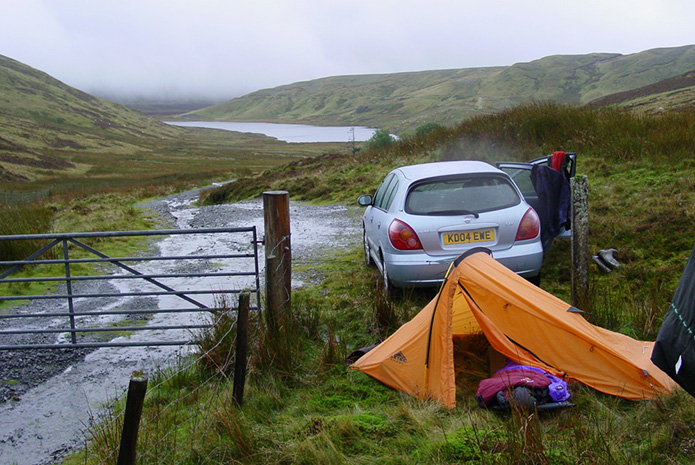
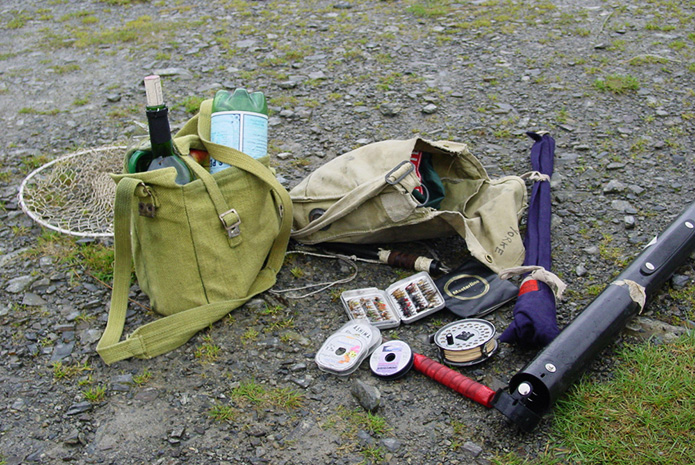
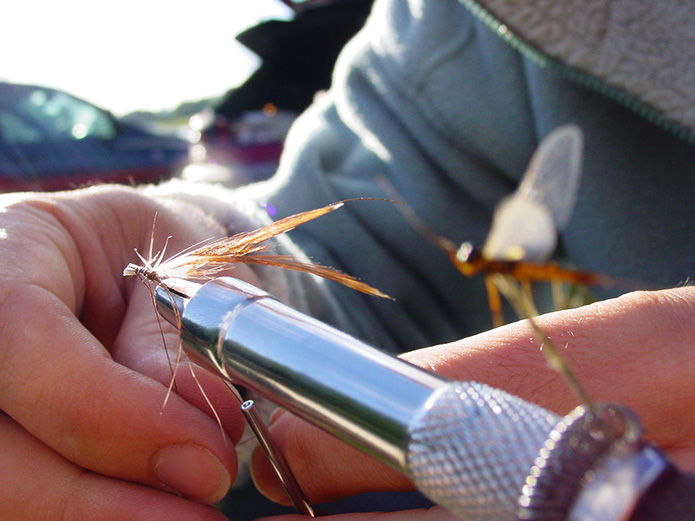
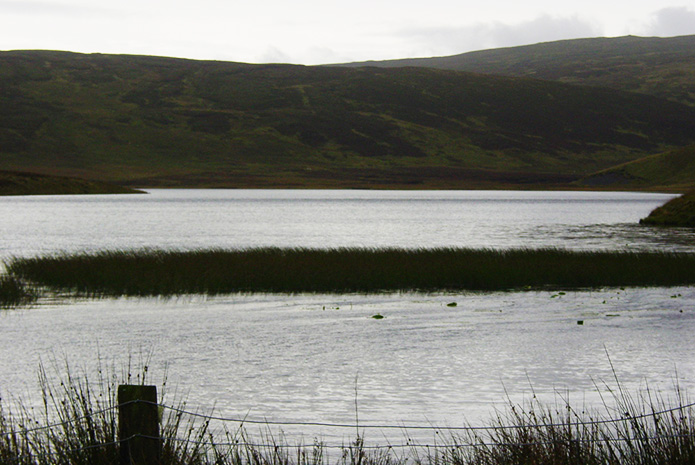
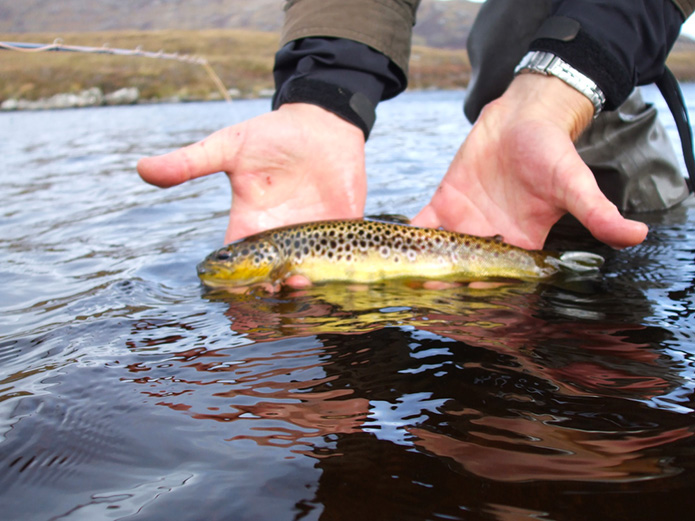
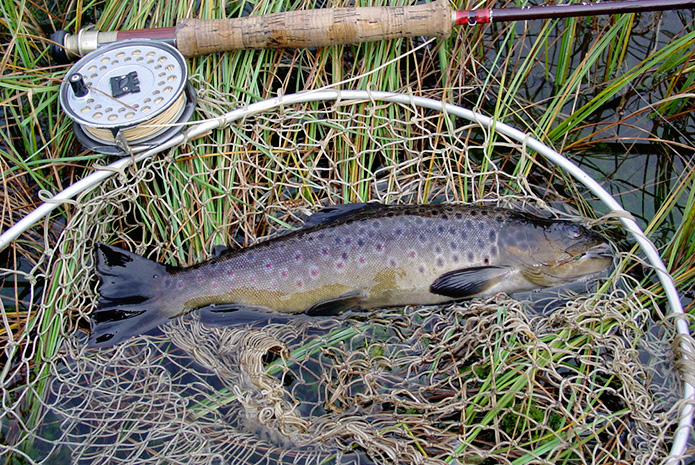
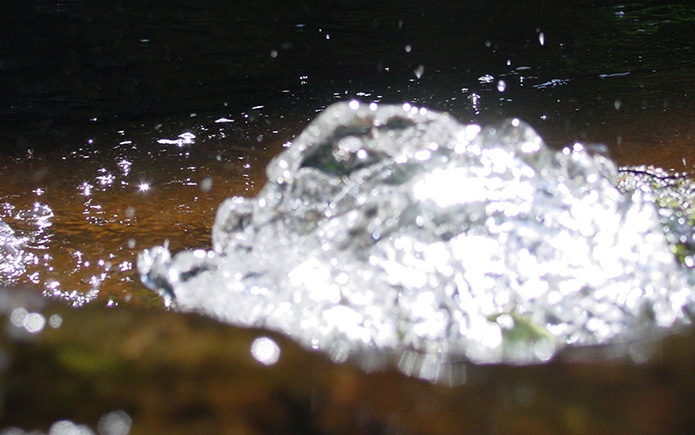
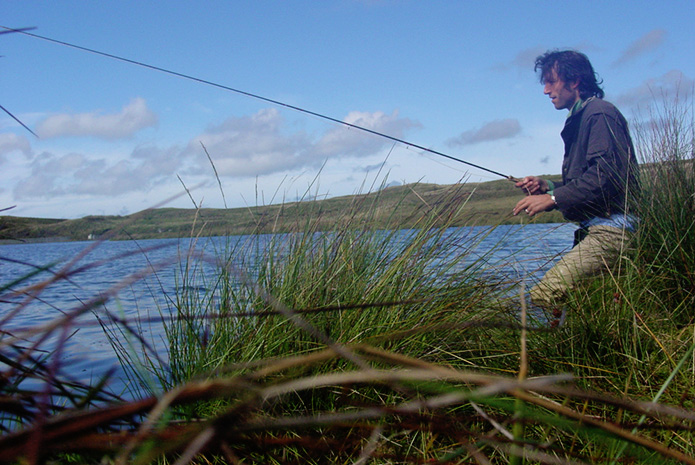
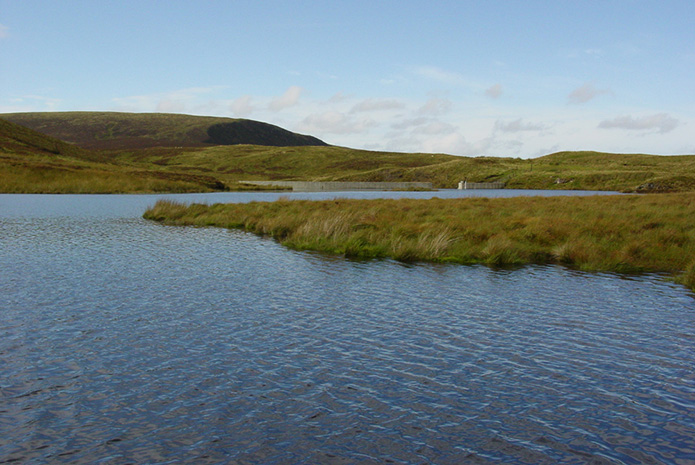
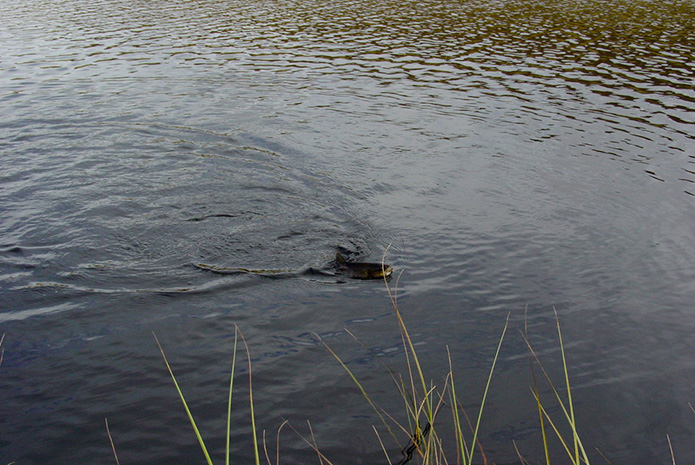
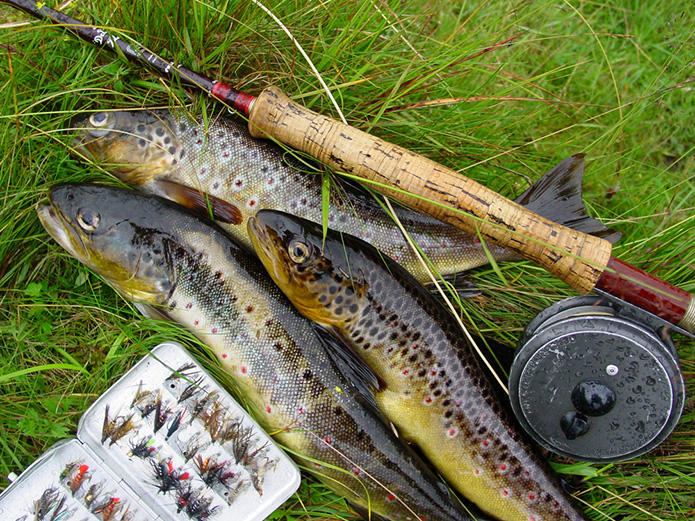

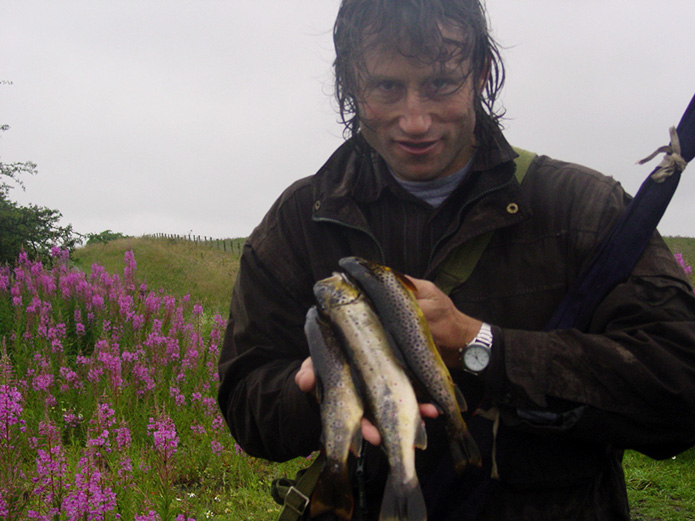
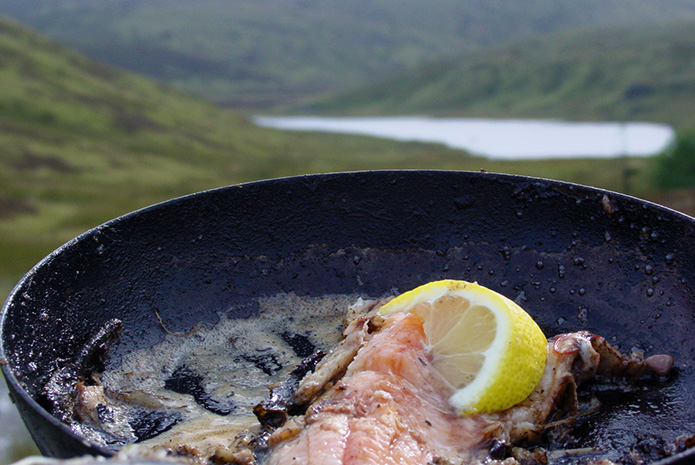









Saturday, August 27th 2022 at 10:14 am
[…] and Wales as remote as this in which to go sailing. Some research does suggest this is also a great spot to fish if you want to escape the modern world and connect fully with […]